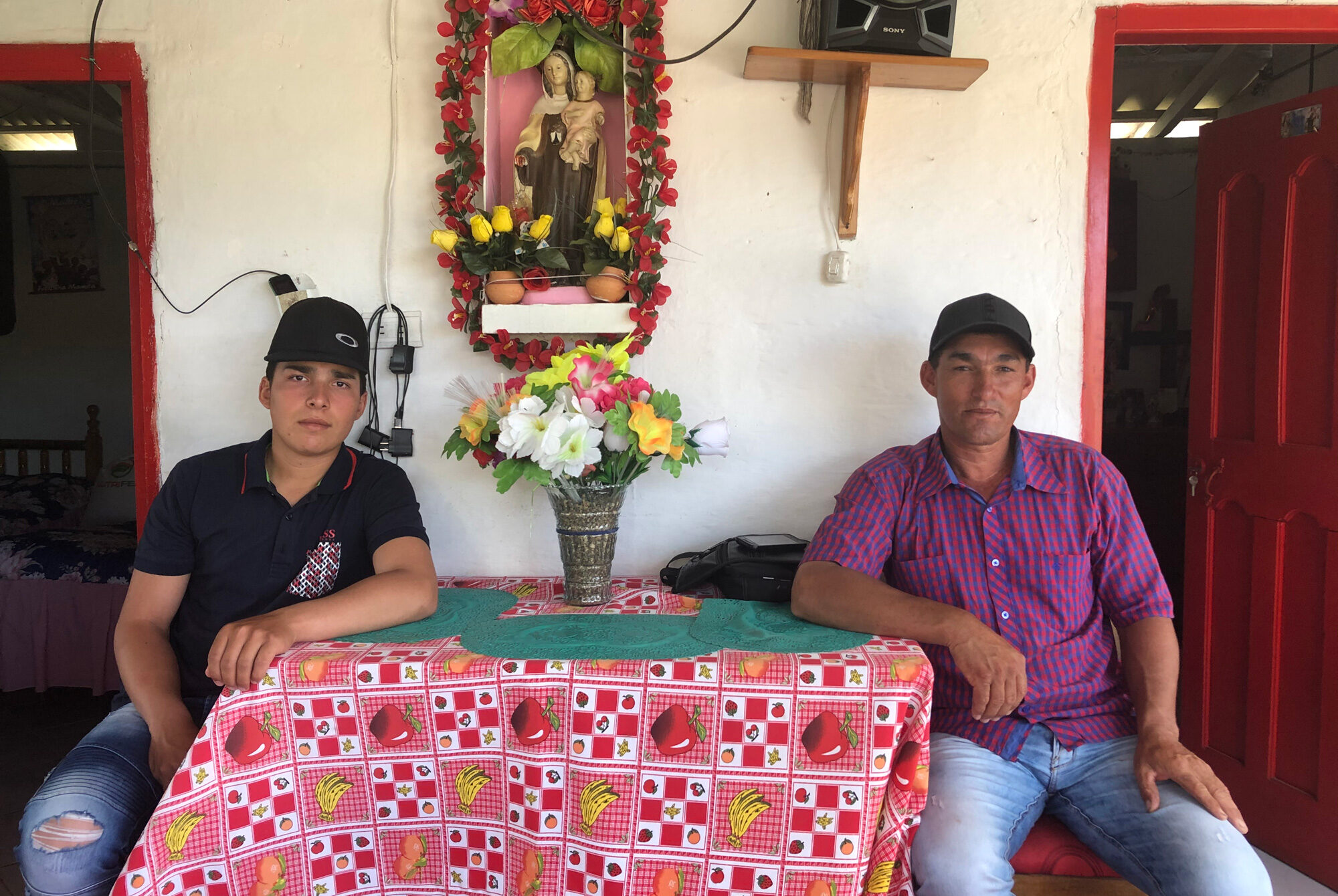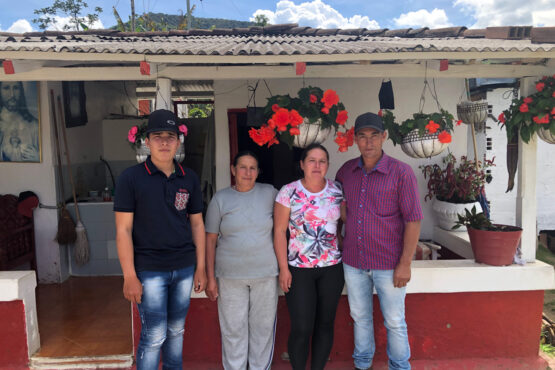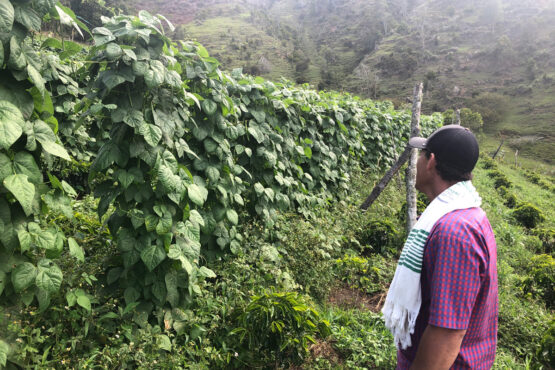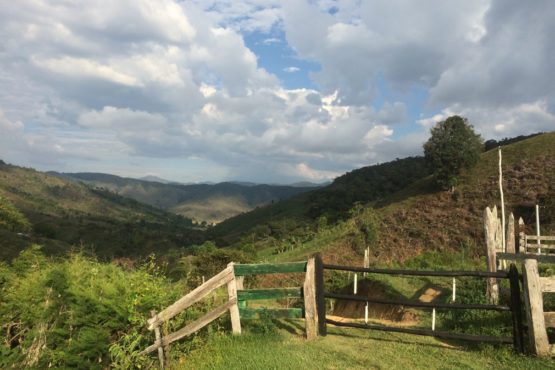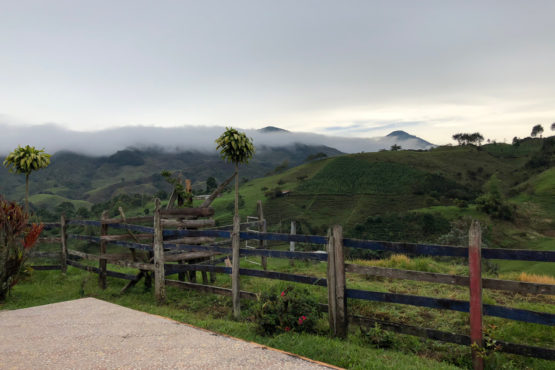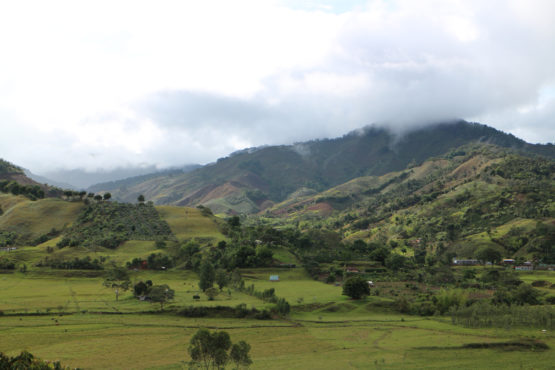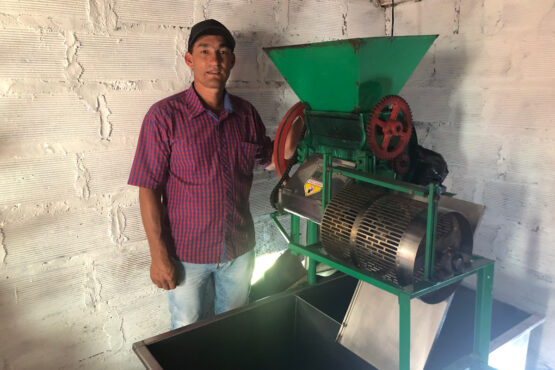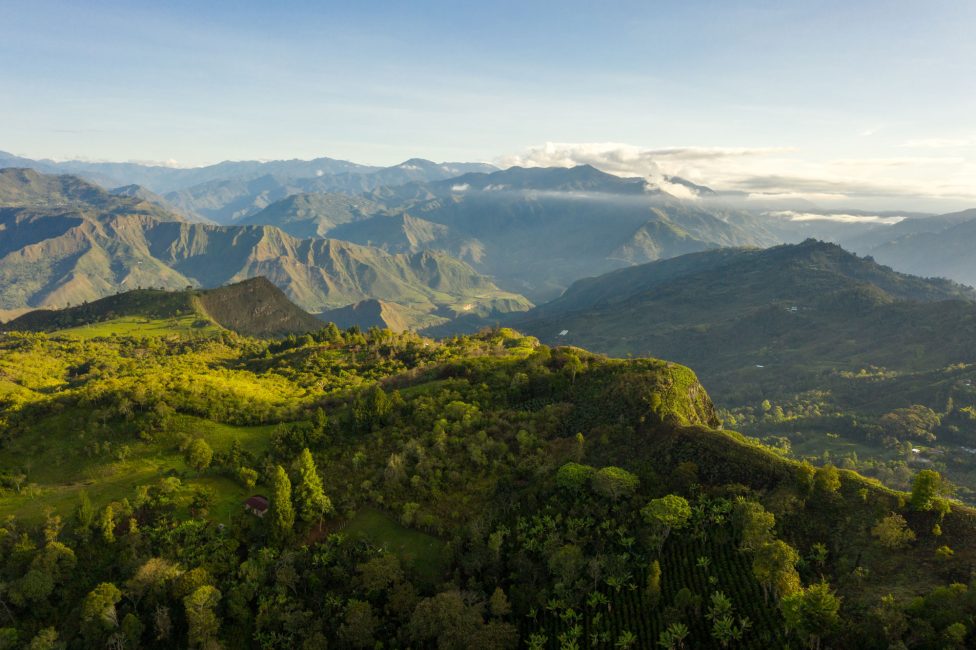La Casita
Oolong tea, green grape and dried apricot, with honey sweetness. Silky texture and a long, floral aftertaste.
This 100% Caturra variety micro-lot was produced by Gustavo de Jesús and Adriana Berrío, on their 1.5 hectare farm, La Casita (meaning “little house”). Finca La Casita sits at 1,950 meters above sea level, located in the sloping hills that surround Rio Pendarisco, in the unique growing region of Urrao, in Western Antioquia, Colombia.
The land was initially purchased by Gustavo’s parents, who moved their family here in the 1980s from the region Caicedo, escaping the danger and disruption resulting from violent clashes between government, rebel and illegal paramilitary groups at that time. After his father passed away, Gustavo inherited the family farm and continues to grow coffee and other crops on the land, assisted by his son, David (pictured above, with Gustavo).
The family has used the farm for different purposes over the years, sometimes dedicating the land exclusively to crops like beans and lulo, a type of local passionfruit. Historically, they regarded coffee as a less profitable crop, due to its labour-intensive production and the instability of its price. This has changed in recent years, as specialty buyers have gained access to regions like Urrao and pricing has increased and stabilised for high-quality lots. Like many farmers in the region, Gustavo has planted Caturra, a high quality variety that grows well in Urrao’s cool climate. He has also planted the new variety, Chiroso, a long bean variety native to the region that has become recognised for its exceptional cup quality. Gustavo accessed the Chiroso seedlings through his wife, Adriana, whose mother, Aide Montoya, is an influential coffee producer in the same region.
Coffee production is not without its challenges for the Berrío family. Labour is an issue, as many local workers are employed by the growing avocado industry in the region. However, Gustavo is confident with the higher prices they can attract for high quality lots, he will be able to compete for the extra labour required during the busy harvest season.
ABOUT URRAO
Urrao is a unique and special coffee growing region, located in the valley of Rio Pendarisco, between 1900 and 2000 meters above sea level. Unlike other producing regions in Colombia – which are characterised by deep canyons and massive, rugged mountains – Urrao is covered in rolling green hills, calm pastures and beautiful rivers that snake through the landscape. This geography guarantees cool temperatures year-round, typically only reaching between 12-25 degrees. This cool climate is ideal for slow ripening of coffee cherries, leading to denser beans and a sweeter, more complex cup profile.
Until recently Urrao was overlooked as a coffee-producing region and dismissed by many as being too cold for good production. There is still very little coffee produced in the area, despite it being some of the most fertile land in Antioquia. Like Gustavo, many farmers complement the income they make from coffee by growing other crops like lulo and beans. Coffee grown in Urrao is slowly becoming recognised and sought after for the high quality and complexity of coffees produced here.
Farms in Urrao are very small – averaging just 1.5 hectares – and are traditionally farmed. Fertilisation occurs around three times a year, usually after manual weeding, and pesticides are rarely used. The coffee is selectively hand-harvested, with most labour being provided by the farmers and their families.
ABOUT ANTIOQUIA
Antioquia is located in central North-Western Colombia. Coffee was introduced to the region in the latter part of the 19thcentury. Since then, this mountainous, fertile department has planted 128,000 hectares of coffee that is produced by a mix of large estates and tiny farms.
Antioquia only recently became more accessible to specialty coffee buyers – largely thanks to a transformation of the department led by Sergio Fajardo, who was the governor of the department in 2012-2016. Sergio transformed Antioquia’s capital city, Medellín, from a violent and dangerous place to a world-class tourist destination with a strong economy. Coffee has played a significant role in this transformation, and as access to many producers has improved, the region has become one of Colombia’s most important and celebrated coffee-producing areas.
HOW THIS COFFEE WAS SOURCED
This coffee is sourced by our export partners, Pergamino, who work with over 50 small, independent farmers in and around the town of Urrao. Pergamino has done a lot to help promote commercialisation of specialty coffee throughout Antioquia and have actively been working to source and support coffee producers in regions where there is a high potential for quality, but that historically have not had access to specialty buyers.
During harvest, farmers like Gustavo de Jesús Berrío deliver small lots (around 100-150kg) of dried parchment to Pergamino’s warehouse every 2-3 weeks. Upon delivery a sample of the dried parchment is milled and assessed for physical attributes, including uniformity of size, presence of defects, moisture content and seed to hull ratio. If the coffee passes the physical assessment it is accepted and the farmer receives their first payment for the coffee, calculated by the weight delivered and a base rate related to the physical quality of the parchment.
The coffee is then cupped and assessed for sensory attributes. After being accepted locally the coffees are transported to Pergamino’s QC lab in Medellin, where they are further assessed by an expert team of cuppers. Each lot is carefully evaluated and, based on the cup score and profile, the coffee is sorted into different grades of quality and combined into exportable sized lots. Feedback on each lot is relayed back to the producer and after it has sold a second payment is made to the producer according to premium the coffee attracted. Coffees that are kept separate and sold as individual lots, like this special micro-lot, represent the very highest quality and receive the best premiums.
Team MCM cupped through many small lots and chose Gustavo’s coffee for its exceptional cup character, with complex florals, winey acidity and fruit-forward notes.
HOW THIS COFFEE WAS PROCESSED
This coffee was selectively hand-harvested, with most labour being provided Gustavo de Jesús and his family. The coffee was processed using the washed method at La Casita’s ‘micro-beneficio’ (mill).
The coffee was pulped using a small manual pulper, and then placed into a fermentation tank. Because of the cooler climate in Urrao, producers in Urrao tend to ferment the coffees for longer than usual and will often blend several days’ worth of pickings over a 3-5 day period. Everyday freshly picked cherry is pulped and added to the mix, which lowers the pH level and – along with the cooler temperatures – allows for an extended fermentation process. This fermentation process contributes to a vibrant, winey acidity in the coffee’s cup profile.
The coffee was then carefully dried (over 10–18 days) on parabolic beds, which are constructed a bit like a ‘hoop house’ greenhouse, and act to protect the coffee from the rain and prevent condensation dripping back onto the drying beans. The greenhouses are constructed out of plastic sheets and have adjustable walls to help with airflow, and temperature control to ensure the coffee can dry slowly and evenly.
Once dry, the coffee was delivered to Pergamino’s warehouse, where it was cupped and graded, and then rested in parchment until it was ready for export.
Read more about our Colombian export partner, Pergamino, here.
